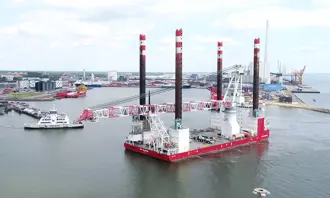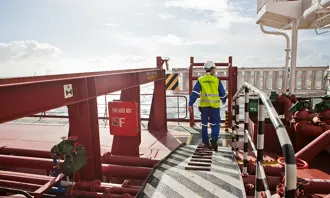A year we will never forget
The past year has shown very clearly that shipping binds the world together. Countries, regions, cities and businesses have closed down and reopened, depending on how badly the coronavirus has taken hold. But the shipping companies have kept going and have maintained supplies of goods and services throughout the pandemic.
Despite the fact that we have had even greater challenges in getting crews out and back home, and at times we have largely looked in vain for passengers on the ferries, the core task has been solved. This is whether we sailed with containers, gas, oil, timber, sand, wind turbine technicians or something completely different. As an ordinary, everyday consumer, I can say that I have seldom searched in vain for the goods I went out to get. The supply chains have been maintained and that makes me proud on behalf of the entire industry. We can take much of the credit for that.
The incident in the Suez Canal, where a container ship from Evergreen became wedged across the canal, was a shining example of the fact that if you slow down shipping, you slow down world trade. I think that many people who do not normally have anything to do with shipping came to realise that 80-90% of world trade is carried by sea, and that we therefore play a major role in the lives of many people.
In 2020, exports for Danish shipping amounted to DKK 238 billion, which is very close to the result from our record year in 2019.
We make up one fifth of all Danish exports and are thus by far the largest single export industry in Denmark. At the same time, we have so many ships at our disposal that, measured by operated tonnage, we are still the world’s fifth largest maritime nation.
That brings obligations. Many look at us when it comes to CO2 emissions. It is obvious that the future of Danish shipping has a single overriding agenda: A successful reduction of CO2 emissions and total conversion to carbon-neutral shipping in the long term, no later than 2050.
This recognition has embedded itself across a broad spectrum of Danish shipping companies, and we are engaged in the development of new green fuels, the optimisation of ship design and the work on creating a global framework and regulations that will bring emissions down.
Given our position in society and our ambitions for a greener future, Danish shipping will become no less relevant in the coming years, in fact quite the contrary. I believe in a strong 2021 on all fronts.
Jacob Meldgaard, Chairman of Danish Shipping
Given our position in society and our ambitions for a greener future, Danish shipping will become no less relevant in the coming years, in fact quite the contrary.
Year in Brief
Another COVID-19 Year
Despite being a year marked by the COVID-19 pandemic, the shipping industry exited 2020 with only a slight 1.1-percent decrease in overall exports compared to 2019, a record year.
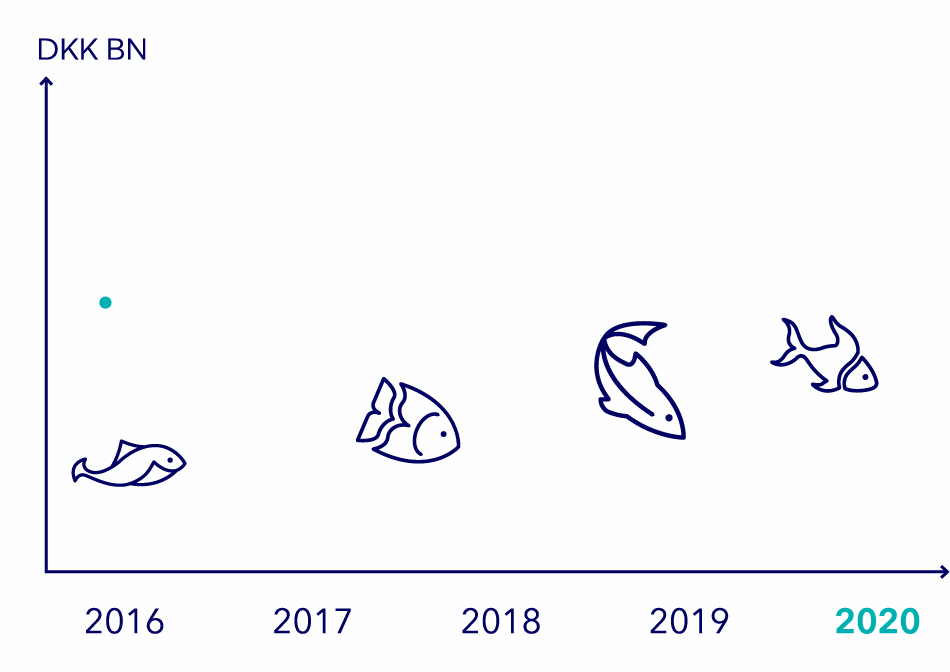
A Fifth of Total Exports
Shipping accounted for a fifth of Denmark's total exports in 2020.

Fleet Still Growing
764 vessels, accounting for total gross tonnage of 21.3 million tonnes, were Danish-flagged in 2020.

Biggest Markets of Danish Shipping
Asia ranks as the top export market, accounting for 31 percent of total exports, followed by Europe at 29 percent and North America at 11 percent.
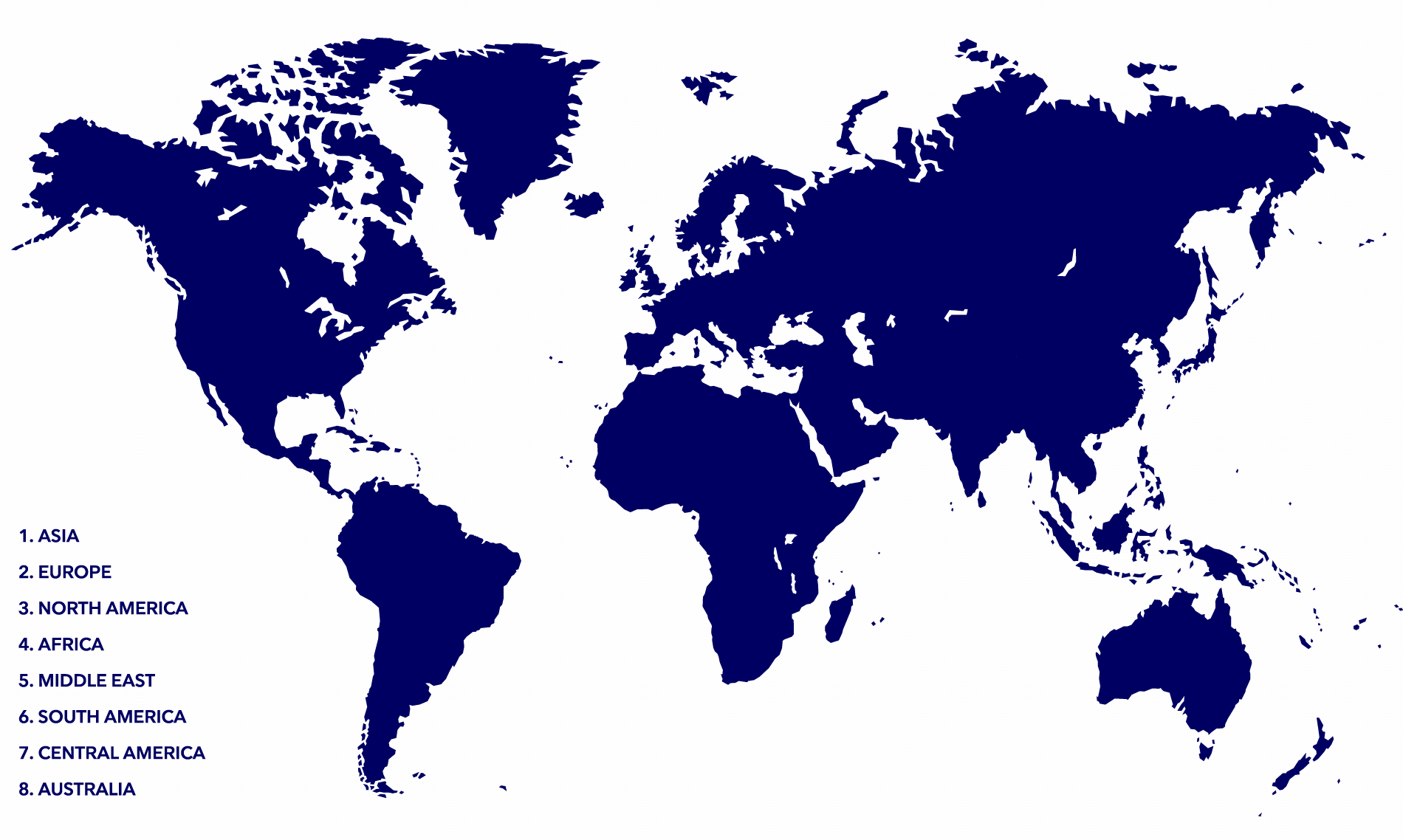
Among the Largest Seafaring Nations in the World
Danish Shipping holds a strong position in terms of competing with other seafarings nations. In 2020, Denmark retained the ranking as the world's fifth-largest seafaring nations measured in operated tonnage.
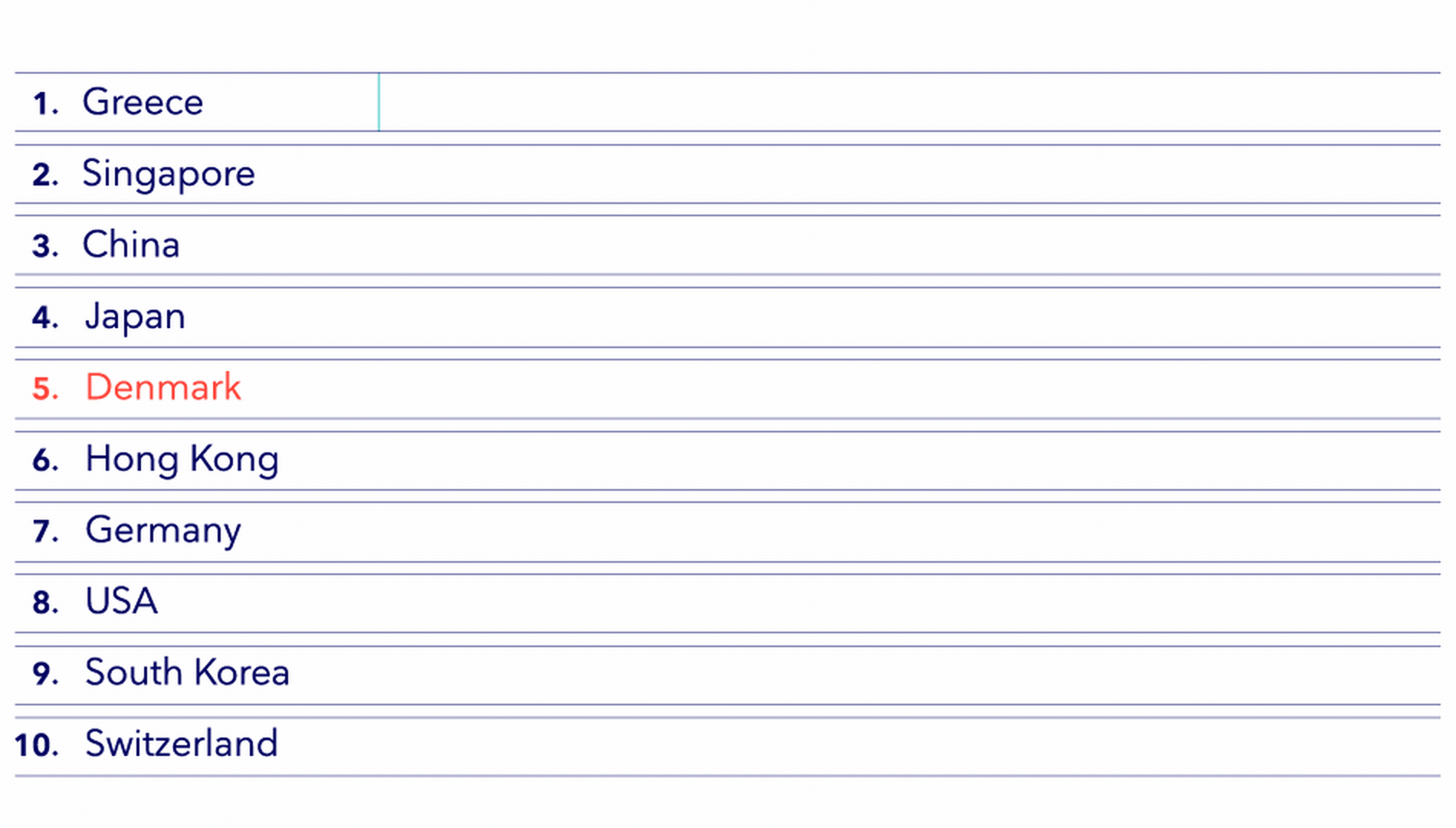
Climate
Accelerating the green transition
When the United States’ special climate envoy John Kerry announced in April that the USA will work towards carbon-neutral shipping by 2050, the four years of foot dragging by the US in the climate area was suddenly replaced by an ambitious approach, which we at Danish Shipping welcome very much. The US change of course will hopefully accelerate the green momentum we are currently seeing.
The announcement came on top of a year in which work to reduce shipping’s CO2 emissions has reached a milestone:
In November, the countries in the United Nations’ International Maritime Organization (IMO) agreed on the basic principles for regulating shipping’s CO2 emissions. This is the first time that global regulations for the world fleet have been adopted. Although a great deal of work is still under way to agree on the underlying details, the fact that both the operational and technical aspects of sailing are included is an important step, and that should be celebrated.
The most CO2-friendly form of transportation
Measured in CO2 emissions per kilometre, shipping remains the least emitting form of transportation.

Developments on the climate front
The Mærsk Mc-Kinney Møller Center for Zero Carbon Shipping sees the light of day in 2020 as a new powerhouse for the transformation of shipping, and shipping companies are in full swing with green transformation.
DFDS wants to develop a hydrogen ferry for the Copenhagen – Oslo route, A.P. Moller – Maersk has said that it will launch its first carbon-neutral ship in 2023, and the offshore wind company MHO & Co will take delivery this summer of some of the world’s first hybrid CTVs (crew transfer vessels). They will test the new fuel technology while simultaneously transporting wind turbine technicians to and from offshore wind farms in the North Sea.
Looking a few years back prior to April 2018, there was no global reduction target for shipping’s CO2 emissions. Now, the IMO has a target for 2030, where ships will sail 40% more efficiently than in 2008; and a target for 2050, when the sector as a whole must have halved its CO2 emissions.
At the same time, Danish Shipping is adhering to the even more ambitious goal of carbon-neutral shipping by 2050. This is now backed up by the Americans.
In short, we have come a long way in a short time. And the course is set firmly towards a carbon-neutral future.

Piracy
Improvements from last year
The situation in the Gulf of Guinea is serious and has been so for some years. Virtually all kidnappings at sea take place in the Gulf of Guinea, and three Danish-operated ships have been attacked. Danish Shipping has long been working in a targeted way to create political awareness about the poor security for ships in the area. There were repeated meetings with the Minister of Defence, Trine Bramsen. In March, the government, together with Danish Shipping, was able to announce that Denmark is sending a frigate to the Gulf of Guinea.
It is an important step towards increasing security, and now the work of gaining international support for a coordinated effort continues. Here, it may also be worth noting that a special representative for maritime safety, Jens-Otto Horslund, has been appointed.
It will still take a great deal to solve the massive problems of piracy in the Gulf of Guinea, but from our point of view, the starting point is now better than last year.
The labour market and education
Developments and initiatives
Record number of internships
Interest in a life at sea is growing. The maritime training courses are experiencing great demand, and the shipping companies rounded off 2020 by making available a record number of internships. A total of 480 internships (man-years) were available to students last year, and this is a clear record which was also noted by the Minister for Higher Education and Science, Ane Halsboe-Jørgensen. This number of places exceeds the internship guarantee of 350 places offered by Danish Shipping. Interessen for et liv til søs er stigende. De maritime uddannelser oplever stor søgning, og rederierne kvitterede i 2020 med at stille et til rådighed. Hele 480 praktikpladser (årsværk) var klar til de studerende sidste år, og det er en klar rekord, som også blev bemærket af uddannelses- og forskningsminister Ane Halsboe-Jørgensen. De mange pladser overstiger også den praktikpladsgaranti, som Danske Rederier har stillet på 350 pladser.
New course
Danish Shipping Academy’s two-year training course was given a new name and content, and is now called Danish Shipping Education. The training now focuses more on innovation, sustainability and future perspectives, and new subjects such as “Energy and Fuel” on fuel bunkering, and “Logistics and Supply Chain Management” on the supply chains between ship and shore, are on the timetable. Trainees can specialise in order to become shippers, operators or bunker traders.
Women in shipping
The drive to attract more women to the shipping industry is ongoing; 23 shipping companies have joined the Charter for more women in shipping, but the concrete efforts have suffered in a number of places due to the fact that there has been great focus on the coronavirus crisis. The ambitions are no lower for that reason. The industry must attract more women, and there must be room for everyone in the shipping companies. In the coming year, we hope to be able to run more events that support this drive.

